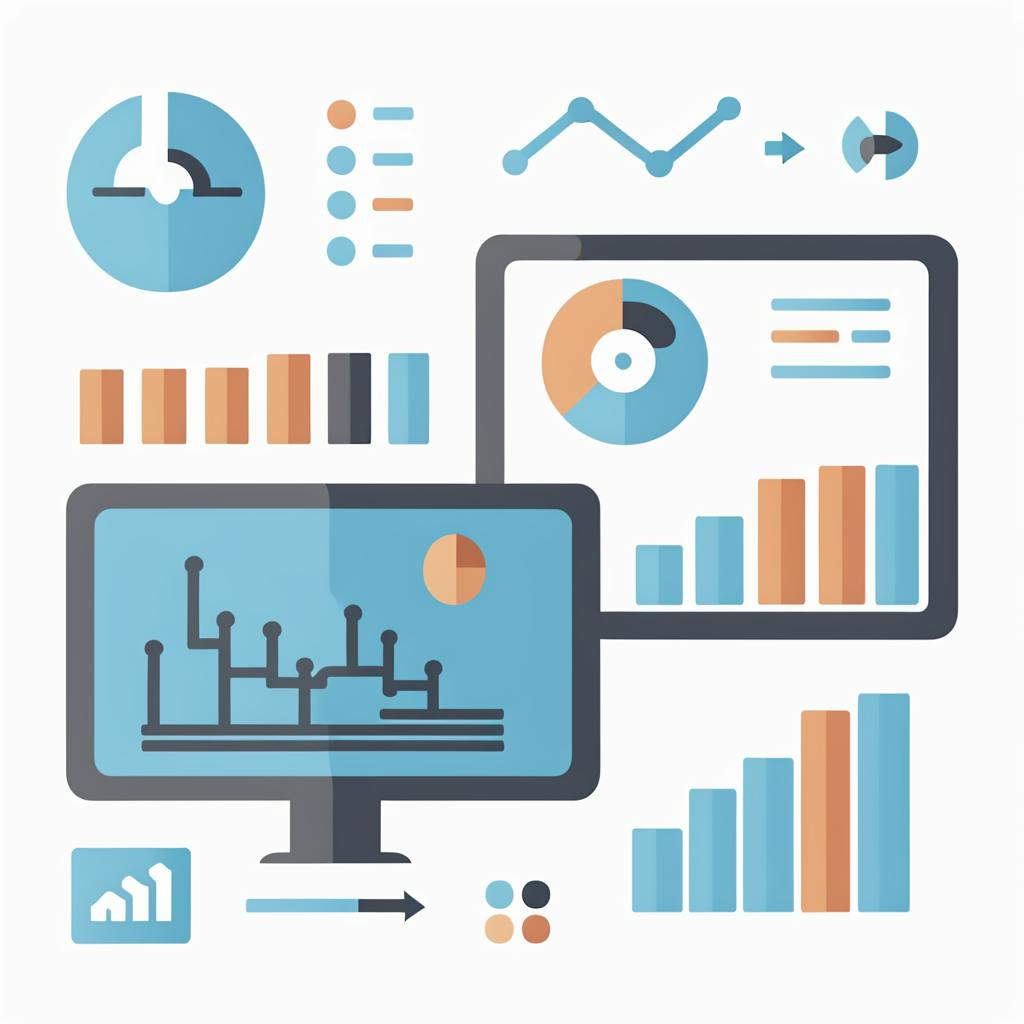In the age of digital transformation, understanding digital analytics metrics is not just a skill but an essential competency for businesses aiming to thrive in a competitive online landscape. Digital analytics metrics offer invaluable insights into user behavior, site performance, and marketing efficacy. They serve as a compass, guiding companies as they navigate through the intricate web of digital marketing. But with an overwhelming sea of data available, mastering the art of interpreting these metrics requires a strategic approach that combines analytical skill with industry knowledge.
Understanding the Basics of Digital Analytics Metrics
Digital analytics metrics translate to the quantifiable measures used to track and assess the performance of various digital marketing activities. These metrics can range from traditional measures like page views and bounce rates to more complex dimensions such as customer lifetime value and conversion paths. Understanding these metrics is imperative for accurately analyzing user behavior, optimizing marketing strategies, and ultimately driving business success.
Why Are Digital Analytics Metrics Important?
- Informed Decision-Making: Digital analytics metrics provide concrete data that can inform strategic business decisions. By understanding customer preferences and behaviors, companies can tailor their products and marketing messages to better meet the needs of their audience.
- Performance Measurement: Through digital analytics metrics, businesses can clearly see which strategies are effective and which are not. This allows for timely adjustments and improved resource allocation.
- ROI Calculation: By tracking specific metrics, businesses can calculate the return on investment for various marketing campaigns and channels, determining which efforts generate the best financial returns.
Key Digital Analytics Metrics to Focus On
While there are countless metrics available, mastering the art requires focusing on those that truly impact your business objectives. Here are some that stand out:
- Conversion Rate: Conversion rate measures the percentage of users who complete a desired action out of the total visitors. It’s crucial for understanding the effectiveness of a digital strategy in converting interest into valuable customer interactions.
- Traffic Sources: Knowing where your audience is coming from is essential. Break down traffic by organic search, referral, direct, social, and paid channels. Doing so helps identify which channels are most effective and need more investment.
- Customer Engagement Metrics: Metrics such as average session duration, pages per session, and bounce rate allow you to gauge how engaging your website content is. A high bounce rate could signal that your landing pages are not meeting user expectations.
- Customer Acquisition Cost (CAC): Understanding how much you’re spending to acquire each customer helps in evaluating the sustainability and efficiency of your marketing efforts.
- Return on Ad Spend (ROAS): This tells you the revenue generated for every dollar spent on advertising, which is crucial for managing ad budgets effectively.

AI made with Stephanie Jagiello
Frequently Asked Questions about Digital Analytics Metrics
How can I track digital analytics metrics effectively?
Implementing platforms like Google Analytics or Adobe Analytics in conjunction with clear business goals ensures effective tracking. Customized dashboards and reports can provide a snapshot of key metrics aligned with objectives.
How do digital analytics metrics support A/B testing?
Metrics such as click-through rates, conversion rates, and engagement time help in evaluating variations in A/B testing, ensuring that businesses can make data-driven decisions based on user interactions.
Can digital analytics metrics predict future trends?
While metrics mainly analyze current and past data, they can be used to forecast trends by identifying patterns and anomalies in user behavior, offering insights into future customer needs and market directions.
Digital analytics is a crucial component for businesses striving to thrive in a competitive digital landscape. By understanding and mastering digital analytics metrics, businesses can gain valuable insights into user behavior, website performance, and marketing efforts. In this FAQ article, we’ll explore some common questions about digital analytics metrics and their significance.
What are some commonly used digital analytics metrics?
Digital analytics metrics are indicators that provide insights into various aspects of a website or digital marketing campaign. Here are some of the most commonly used metrics:
- Page Views: The total number of times a page on your website is viewed. This metric helps measure overall website traffic.
- Unique Visitors: The number of distinct individuals visiting your website over a specific time period. It helps understand the audience size.
- Bounce Rate: The percentage of visitors who leave your website after viewing only one page. A high bounce rate may indicate issues with the landing page or irrelevant traffic.
- Conversion Rate: The ratio of conversions (e.g., purchases, sign-ups) to total visitors. It measures the effectiveness of your website in achieving its goals.
- Average Session Duration: The average amount of time a user spends on your website during a single session. Longer durations often indicate engaging content.
- Traffic Sources: This metric shows where your visitors are coming from, such as search engines, social media platforms, or direct visits.
- Click-Through Rate (CTR): The percentage of users who click a specific link or ad compared to the total number of users who view it. It's crucial for evaluating the effectiveness of digital marketing campaigns.
- Exit Rate: The percentage of users who leave the site from a specific page. This metric helps identify pages where visitors frequently drop off.
How can mastering digital analytics metrics improve my business?
Mastering digital analytics metrics can significantly improve your business in various ways:
- Better Decision-Making: By understanding user behavior and preferences, you can make informed decisions about website design, content, and marketing strategies.
- Enhanced User Experience: Analytics reveal areas where you can improve the user experience, leading to increased satisfaction and loyalty.
- Optimized Marketing Strategies: By evaluating the performance of different channels and campaigns, you can allocate resources more effectively, resulting in higher ROI.
- Increased Conversion Rates: By identifying barriers in the conversion funnel, you can implement changes to improve conversion rates and revenue.
- Targeted Content Development: Understanding popular content and topics allows you to create more relevant and engaging content for your audience.

AI made with Stephanie Jagiello
Why is interpreting digital analytics metrics an important skill to have?
Interpreting digital analytics metrics is essential because it turns raw data into actionable insights. Here’s why this skill is important:
- Informed Strategy: Effective interpretation allows you to align your strategies with actual user behavior and market trends.
- Problem Identification and Resolution: By interpreting metrics, you can pinpoint issues like high bounce rates or low conversion rates and address them promptly.
- Performance Tracking: Interpreted data offers a clear view of your performance over time, helping you track progress against your business goals.
- Competitive Advantage: Businesses that can quickly interpret and act on analytics data are better positioned to outmaneuver competitors.
- Tailored Customer Experiences: With precise interpretation, you can better understand customer needs, leading to more personalized experiences.
What resources can help me master the art of interpreting digital analytics metrics?
There are several resources available to enhance your skills in interpreting digital analytics metrics:
- Online Courses and Certifications: Platforms like Coursera, Udemy, and Google Analytics Academy offer courses tailored to digital analytics and metric interpretation.
- Books and eBooks: Books such as "Web Analytics 2.0" by Avinash Kaushik provide in-depth knowledge and practical insights into web analytics.
- Webinars and Workshops: Industry webinars and workshops offer live learning experiences and opportunities to engage with experts.
- Google Analytics Help Center: A comprehensive guide to using Google Analytics effectively, including interpreting various metrics.
- Professional Networking Groups: Joining groups on LinkedIn or local analytics meetups can provide networking opportunities and shared knowledge.
Mastering digital analytics metrics offers a pathway to improving your business's digital strategy and achieving long-term success. By leveraging the resources and techniques mentioned above, you can elevate your analytics skills and drive meaningful results for your organization.
Mastering the art of interpreting digital analytics metrics is an ongoing journey. By focusing on the most impactful metrics, businesses can enhance their decision-making, optimize their marketing strategies, and improve their overall digital performance. In a world driven by data, the ability to skillfully interpret digital analytics metrics is more valuable than ever. Embrace the power of data and let digital analytics metrics steer your path to success.

